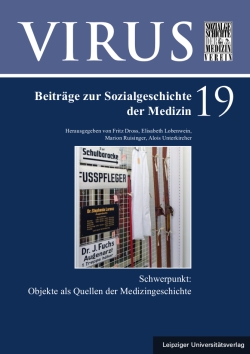
VIRUS Band 19, pp. 093-112, 2021/06/10
Schwerpunkt: Objekte als Quellen der Medizingeschichte

A close look at collection items is an important key to further investigation. However, a stepback from the actual objects, and a search for broader contexts may offer insights that withinthe actual disciplinary field might be overlooked. This paper aims to follow the historical tracesof the dermatological wax moulages in the Würzburg collection. Therefore, it sheds light onthe actors and networks in the process of the production of the popular atlas by Eduard Jacobi,continued by Karl Zieler, that is very much linked to this collection. A broader historical networkis revealed by giving more attention to competitive Josef Jadassohn. Archive material of theJulius Springer publishing house in Berlin turns out to be a fruitful source of information aboutrelationships between doctors as authors, publishers, craftsmen like Alfons Kröner and thehistoricaleconomic situation. Thus, the examined case of moulage “no. 1759” representsa) the dialectics of showing as much as possible in the atlas and keeping the copyright for asmany reproduction models, and at the same time illustrates b) how important well-made andexclusive images are in the realm of modern scientific publishing. Also, uncertainties in thedevelopment of copyright and publishing contracts arise.
Keywords: Wax Moulages, Dermatology, History of Medicine, History of Publishing, Europe, Medical Images, Alfons Kröner, Würzburg, Collection, Dermatological Atlas, 20th Century